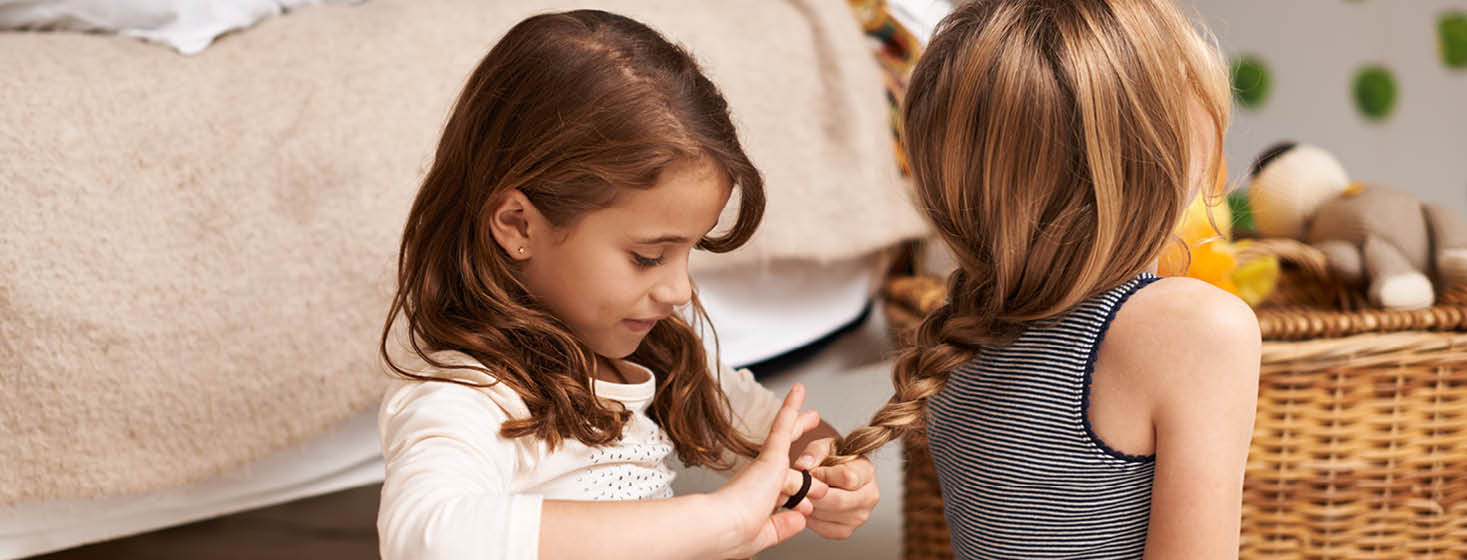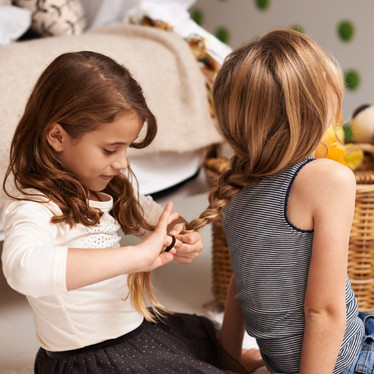
Headlice and ‘nits’ are an intermittent challenge for many parents in New Zealand. Commonly affecting primary school aged children at least once in their lives, head lice in hair can be a bit disconcerting due to its stigma. The lice eggs (nits) can be a challenge to remove, and it can sometimes be a race against time to stop their reproduction in its tracks and prevent the lice from spreading to others. Thankfully, there’s a natural way to get rid of these pesky bugs and prevent them coming back.
Head lice and nits – what you need to know:
- Head lice are a small insect that can live in the warm environment on the scalp. The lice feed off blood from biting the scalp – like a mosquito.
- The saliva in their bite can lead to an uncomfortable itch, that typically starts behind the ears.
- They lay their eggs (nits) on the hair strands close to the scalp.
- Infestations most commonly occur on young children attending school, which can then be passed onto adults.
- They can multiply quickly, and exponentially - attending to them early is best!
- There are three main ways to remove lice: conventional dimethicone based products, natural lice treatment using essential oils, or combing with conditioner.
- You need to check every member of your household to make sure you have got them all – as they spread quickly.
What are head lice?
Head lice are a very small pale insect ( Pediculus humanus capitis), that loves to live on the warm environment of a human scalp. They do not survive long after being removed from the head, which is the good news.
The bad news is that if left to their own devices, adult lice can lay 7-10 eggs per day and multiply over a week. They are very active, cannot hop or fly (often a misconception), and instead crawl, moving from head to head quickly in the classroom and also at home.
Their tiny eggs firmly attach to the base of the hair shaft (approximately 4mm of the scalp) with a glue-like substance making them very hard to detect and remove. Incubated by body heat they stay close to the scalp where it’s warm, and close to the blood supply for their source of food.
Lice vs Nits
Head lice and nits are often used interchangeably to refer to these insects, however the term lice is referring specifically to the insects themselves, and it is the plural of louse. When there are many louse, they are called lice.
The term ‘nit’ or ‘nits’ is used for the eggs of the lice - these attach to the strands of hair and can be difficult to remove.
What do nits look like?
To distinguish between the eggs of head lice from other types of debris you find on the head, such as dandruff or dead skin, other types will slide easily along the shaft of the hair, whereas eggs will not.
- Louse – an individual insect is 2-3mm long, has six legs, and is tan to greyish-white in colour. After a meal they will look more reddish brown.
- Unhatched eggs are darkly coloured and opaque.
- Hatched eggs are clear.
How do people get head lice?
Anyone can catch head lice; it does not matter how clean your hair is – the lice do not discriminate! In fact, they may find it easier to attach to clean hair. Lice infestations usually do the rounds at primary school, and an entire classroom can become quickly infested. These are then brought home and passed on to other members of the family. All it takes is for two heads to be in close contact for the opportunistic louse to find its way to a new home.
How to get rid of nits and lice
There are three main ways to remove lice and nits:
- A conventional headlice treatment containing the chemical dimethicone.
- A natural head lice treatment using essential oils and other natural ingredients.
- A fine-toothed comb in combination with conditioner – which can be very time consuming!
- A combination of a natural head lice treatment alongside using a fine-tooth comb is the best nit treatment for those looking to avoid harsh chemicals on sensitive scalps.
If you have decided you want to remove your child’s head lice (or your own) with natural ingredients then the best method is to use a professional head lice treatment product containing plant carrier and essential oils. Carrier oils (CO) are named so because they “carry” an essential oil (EO) to the skin, scalp and hair. Carrier oils are typically cold-pressed oils that are produced from the fatty portions of a specific plant and are used to suffocate and immobilise the lice.
A properly formulated head lice treatment oil will also contain essential oils which possess ovicidal, repellent, and insecticidal properties and are a natural alternative to eradicate lice and eggs.
5 Steps to Eradicate Lice and Eggs
- Apply a natural Head Lice Treatment Oil and leave on as long as possible to immobilise and suffocate the live lice and penetrate the eggs.
- After an hour, using a fine-tooth comb, carefully section the hair and remove as many lice and eggs as possible. Leave the oil on as long as possible after the initial comb-out, even overnight if possible. Place a towel over the pillow to protect the pillow from any oil transfer.
- The next day, shampoo the oil from the hair. Adding the shampoo before introducing the water will activate the lather better. You may need to shampoo twice to remove all of the oil.
- Apply a Herbal Rinse to detach any remaining eggs and cool and soothe the scalp.
- As a preventative measure and to help avoid future infestation use a preventative spray before school until such a time that the school is nit free.
It does take a little extra time to deal with head lice naturally – in comparison to dimethicone taking a mere 15-30 mins! However, if you are wanting to avoid harsh chemicals and look after your child’s scalp naturally then be assured that these natural methods are tried and true.
The best head lice treatment
Here are our top picks for natural nit treatment:
1. Mr Nits Headlice Treatment
Mr Nits comes with everything you need to remove the pesky nits. This product contains a mixture of six carrier oils for the ultimate lice immobilisation, and three essential oils to end the life cycle of the eggs. This pack comes with the comb to make nit removal a breeze.
|
2. Holistic Hair Showdown Head Lice Treatment Oil
Holistic Hair's Showdown Head Lice Treatment Oil uses olive, coconut, lavender, tea tree, citronella, and pink grapefruit oils for the natural removal of head lice. Following treatment, try using Holistic Hair’s Herbal Finishing Rinse to help soothe the scalp. Holistic Hair’s Showdown Head Lice Shield Spray can also be used to help stop reinfestation of head lice.
|
3. Wildflower Snuff Off – Head Lice Prevention
Snuff Off is a 100% natural head lice repellent spray for the whole family. It contains tea tree, lavender, rosemary and eucalyptus essential oils in a light refreshing base that does not leave the hair greasy. Spritz onto the hair in the mornings before school for peace of mind.
|
4. Licener – Head Lice Treatment
Licener is an easy to use shampoo which is suitable for children aged 2 years and up. It is a convenient one time application that does not need a comb – just use like you would a regular shampoo, spending a bit more time in the lathering phase to ensure you get every nit and louse.
|
At HealthPost we stock a wide range of natural headlice products that have been successfully used to eradicate nits – and keep them away for good. See our full range of Headlice products here, and read the amazing reviews left by fellow parents who can vouch for their ability to do the job.
|





